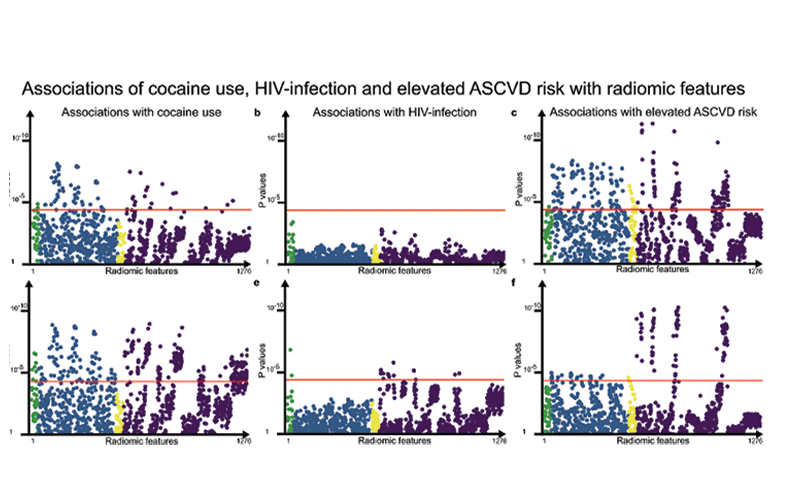Radiomics Detects New Pathways of Cardiovascular Disease Progression
New approach reveals important differences in factors that contribute to coronary plaque structural progression

Clinicians have long recognized the impact of risk factors for cardiovascular disease (CAD). Yet, as Márton Kolossváry, MD, MPH, postdoctoral researcher at Johns Hopkins University (JHU) School of Medicine, Baltimore, MD, noted, visual and volumetric analysis of plaque buildup only describe its magnitude.
“It’s actually quite bothersome that, to date, we describe complex diseases with simple numbers, such as the amount of plaque you have,” Dr. Kolossváry said during an RSNA 2020 presentation.
Dr. Kolossváry said that current markers for CAD are not sensitive enough to identify differences in disease phenotypes and might inaccurately suggest a similarity in the contribution of various atherosclerotic cardiovascular disease (ASCVD) risk factors to disease progression, all increasing the magnitude of the disease.
In their study, Dr. Kolossváry and colleagues took a new approach: radiomics, a precision phenotyping tool which extracts features from radiographic medical images using data-characterization algorithms. This approach provided researchers with multiple parameters to consider when describing the disease.
“Radiomics play a huge role in radiology; essentially what genetics, proteomics and metabolomics did for basic sciences,” Dr. Kolossváry said.
Researchers performed a prospective, longitudinal observational study of 300 asymptomatic patients to determine whether radiomics would uncover disease characteristics and reveal differences not shown through conventional imaging markers alone. Of the 300 patients, 210 were male (average age 49 years), 174 were cocaine users and 226 were HIV-infected. Patients underwent coronary CT angiography (CCTA) twice, and the researchers performed precision phenotyping of CAD by calculating 1,276 radiomic features on 861 plaques found during baseline scans.
“We had a ‘eureka’ moment after we did our first analysis,” Dr. Kolossváry said.
After successfully identifying associations with radiomic features for ASCVD and cocaine use, researchers examined the results more closely and found no overlap between the two.
“The features affected by ASCVD were not affected by cocaine use and vice versa,” he said.
Following a hierarchical clustering of significant radiomic features, Dr. Kolossváry reported finding 13 different structural components. Eight were unique to cocaine use, three were unique to ASCVD risk and two had parameters associated with cocaine use, elevated ASCVD risk and/or HIV infection. Gender and age stratification analyses reflected further differences. The results demonstrate differences in the way cocaine use and HIV infection contribute to CAD compared to more conventional ASCVD risk factors.
“We knew this was something new. Our results have many limitations, but seeing such clear results makes us certain that we are seeing an actual signal, and that we need to rethink how we perceive atherosclerosis,” Dr. Kolossváry said.
The discovery of additional pathways of disease progression may open new targets of pharmaceutical intervention.
“It may help us explain why we see such different manifestations of the disease in different people, even if they are siblings.”
For More Information
Look for the RSNA 2020 session, “Different Risk Factors Results in Unique Coronary Plaque Morphologies-A Longitudinal Radiomic Analysis,” at RSNA2020.RSNA.org.
Read previous RSNA News articles on cardiac radiology:
- Women with Coronary Artery Wall Thickness at Risk for Heart Disease
- 3D Fusion Imaging Improves Coronary Artery Disease Diagnosis
- Experts Propose Standardized Criteria for Interpreting, Reporting of CTA-Derived Fractional Flow Reserve Testing
